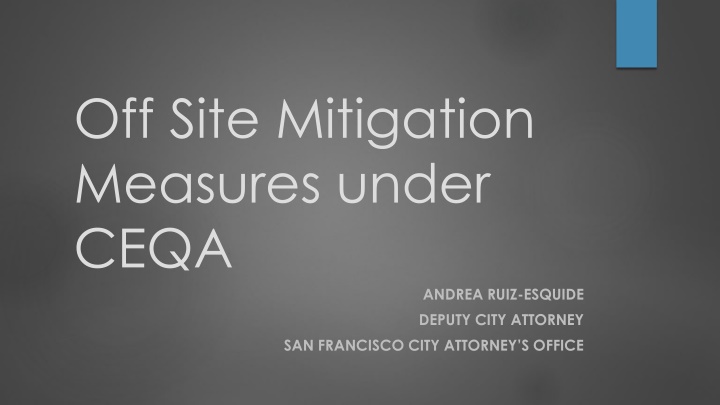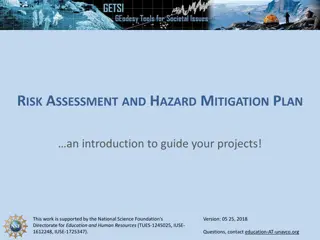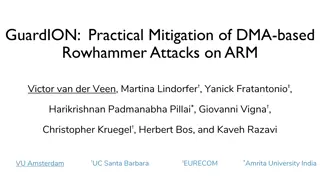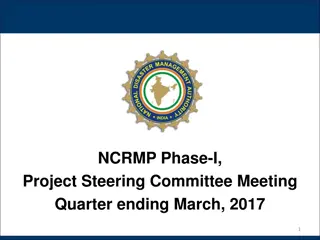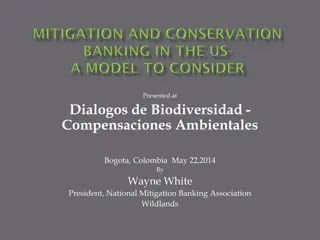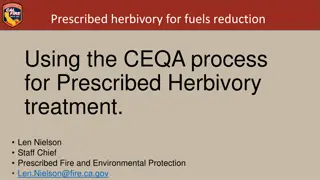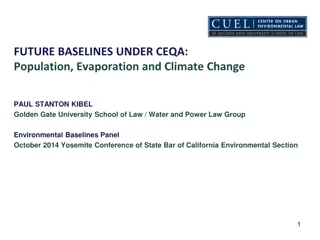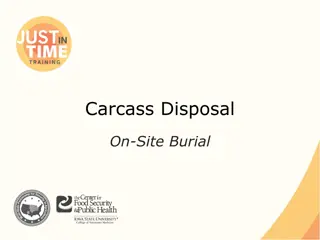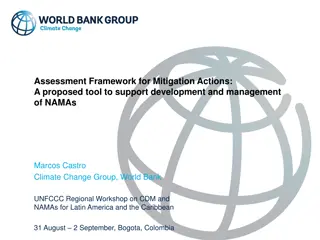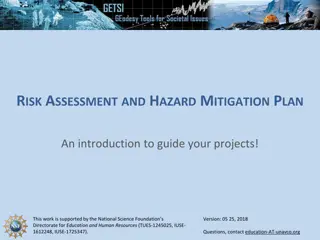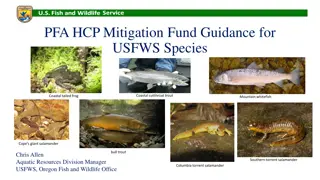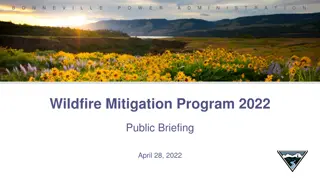Off Site Mitigation Measures under CEQA
Ensure compliance with CEQA regulations by implementing feasible mitigation measures to lessen significant environmental effects. Learn about the authority to require changes, distinguish proposed measures, and avoid deferring formulation. Mitigation strategies include avoiding, minimizing, rectifying, reducing, eliminating, and compensating for impacts. Explore off-site mitigation and the importance of addressing impacts on agricultural resources.
Download Presentation

Please find below an Image/Link to download the presentation.
The content on the website is provided AS IS for your information and personal use only. It may not be sold, licensed, or shared on other websites without obtaining consent from the author.If you encounter any issues during the download, it is possible that the publisher has removed the file from their server.
You are allowed to download the files provided on this website for personal or commercial use, subject to the condition that they are used lawfully. All files are the property of their respective owners.
The content on the website is provided AS IS for your information and personal use only. It may not be sold, licensed, or shared on other websites without obtaining consent from the author.
E N D
Presentation Transcript
Off Site Mitigation Measures under CEQA ANDREA RUIZ-ESQUIDE DEPUTY CITY ATTORNEY SAN FRANCISCO CITY ATTORNEY S OFFICE
CEQA Mitigation Measures Basic Principles Mandate to mitigate public agencies should not approve projects if there are feasible mitigation measures available which would substantially lessen the significant environmental effects (PRC Section 21002). EIRs must emphasize feasible mitigation measures and omit unnecessary descriptions (PRC Section 21003).
CEQA Mitigation Measures Basic Principles Authority to Mitigate lead agencies have the authority to require feasible changes in any or all activities involved in the project in order to substantially lessen or avoid significant effects on the environment consistent with constitutional requirements of nexus and rough proportionality (Guidelines Section 15041).
CEQA Mitigation Measures Basic Principles EIRs must Distinguish between mitigation measures proposed by project proponents and others Identify mitigation measures for each significant effect Where there are several, each should be discussed and the reason for selecting one explained (Guidelines Section 15126.4)
CEQA Mitigation Measures Basic Principles EIRs must Not defer formulation of mitigation measures Discuss any environmental effects produced by the mitigation measures Mitigation measures must be fully enforceable through permit conditions, agreements or other legally binding instruments (Guidelines Section 15126.4)
CEQA Mitigation Measures Basic Principles Mitigation includes: avoiding the impact; minimizing impacts; rectifying the impact; reducing or eliminating the impact; compensating for the impact by replacing or providing substitute resources (Guidelines Section 15370).
Compensating for the Impact: Off Site Mitigation Case law on impacts to agricultural resources: Masonite Corporation v County of Mendocino Citizens for Open Government v City of Lodi Also, impacts to biological resources: Endangered Habitats League v County of Orange Environmental Council of Sacramento v City of Sacramento California Native Plant Society v City of Rancho Cordova
Compensating for the Impact: Off Site Mitigation Main Themes Off site mitigations are adequate under CEQA, under Section 15370(e), even though the mitigation (ACE) does not replace the actual land impacted onsite (Mansonite Co. v. Co. of Mendocino) Agencies sometimes conclude there would be a Significant and Unavoidable impact, under the theory that the resource is unique (Citizens v. City of Lodi)
Compensating for the Impact: Off Site Mitigation Main Themes Cases indicate lead agencies have discretion to select the appropriate ratio of compensation, if decision is based on substantial evidence in the record and on constitutional requirements (examples in the case law: 1:1; .5:1; 1.5:1; 2:1) Cases often discuss off site mitigation together with deferral challenges generally concluding that agency does not have to select a site for the mitigation to be adequate.
Compensating for the Impact: Off Site Mitigation Main Themes Overlap between deferral and feasibility: California Native Plant Society v. City of Rancho Cordova: impact to vernal pools and seasonal wetland habitats; mitigation measure was 2 :1 or 1:1 (existing or new) EIR did not specify off site locations Ct said it s OK Resources agencies (FWS, EPA) criticized the mitigation Ct concluded that s not enough to establish that the City s decision was not supported by substantial evidence
Compensating for the Impact: Off Site Mitigation Main Themes Lessons from case law: Lead agencies have discretion to chose rations of off site mitigation; And do not have to chose the exact place / project that will serve as mitigation no deferral if clear standards; As long as their decisions are based on substantial evidence in the record Show your work!
